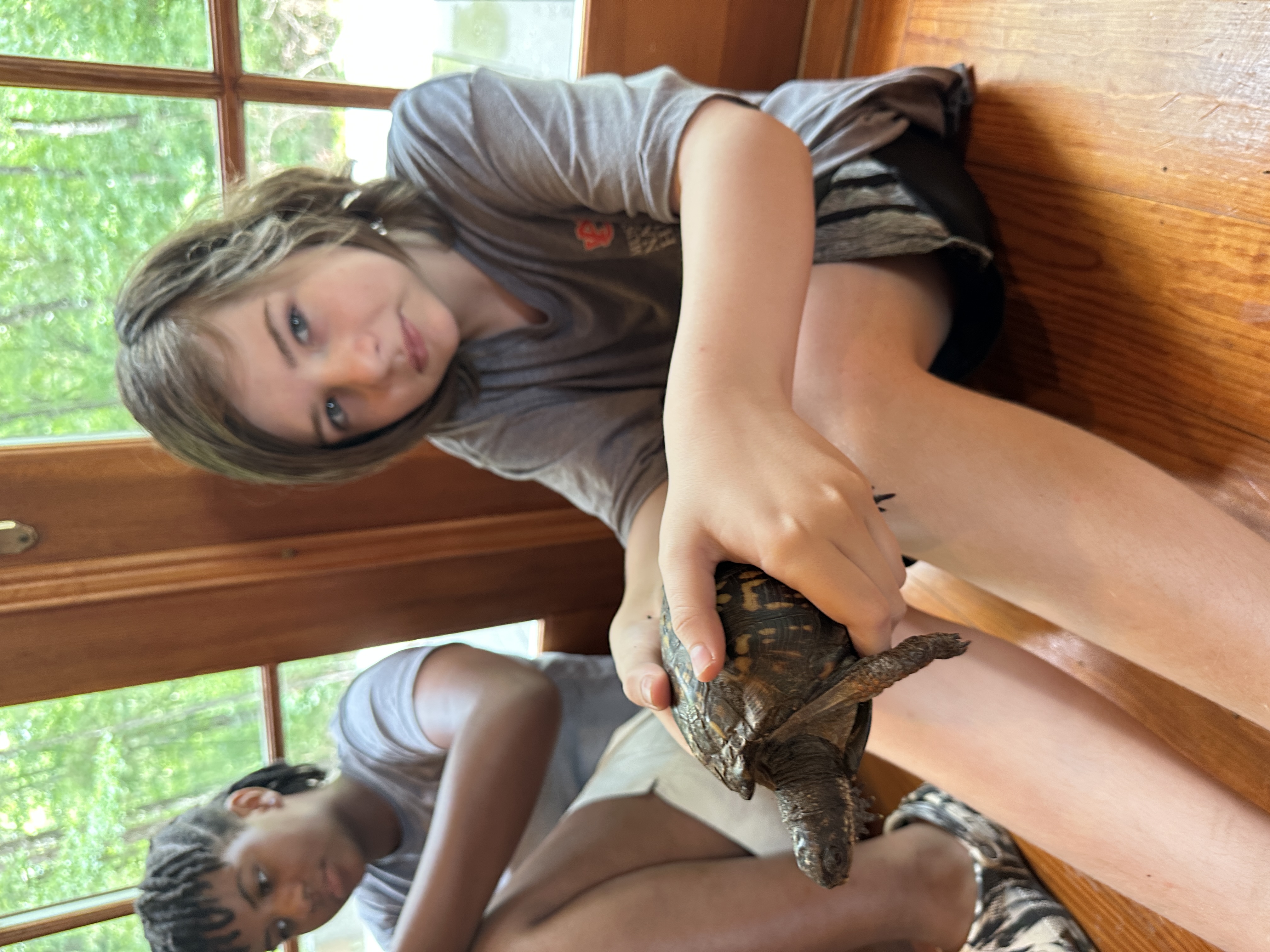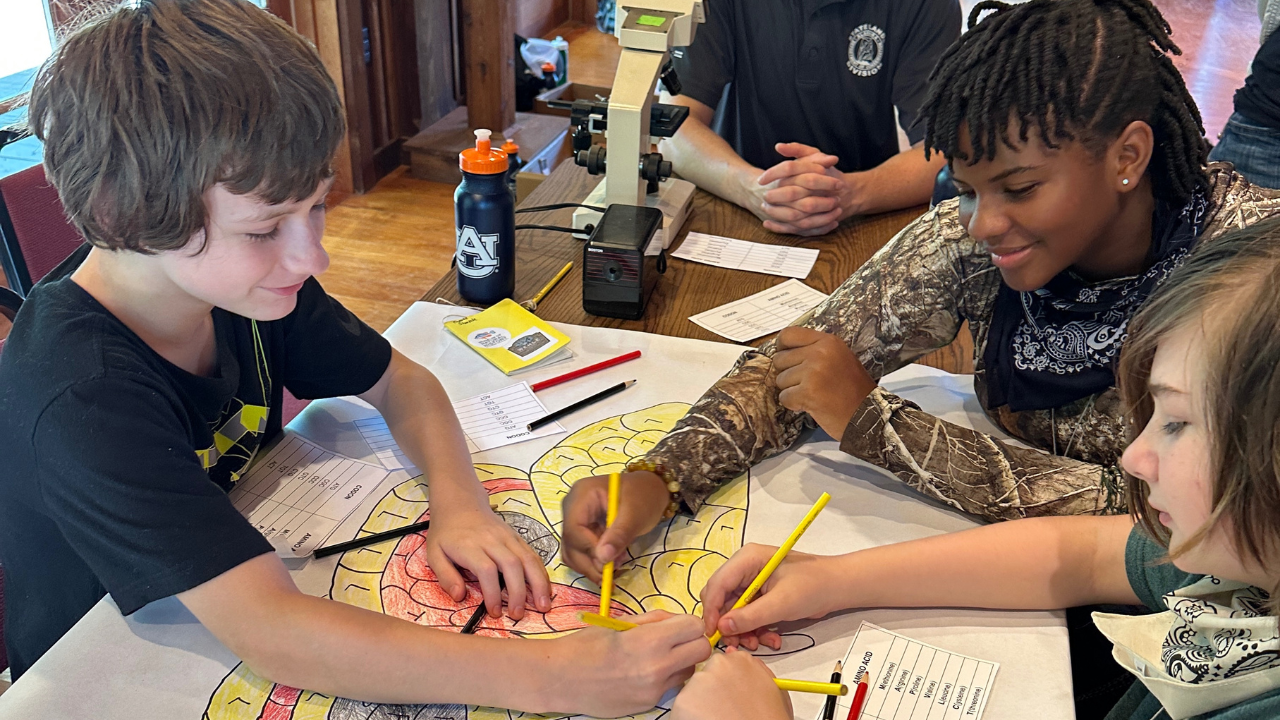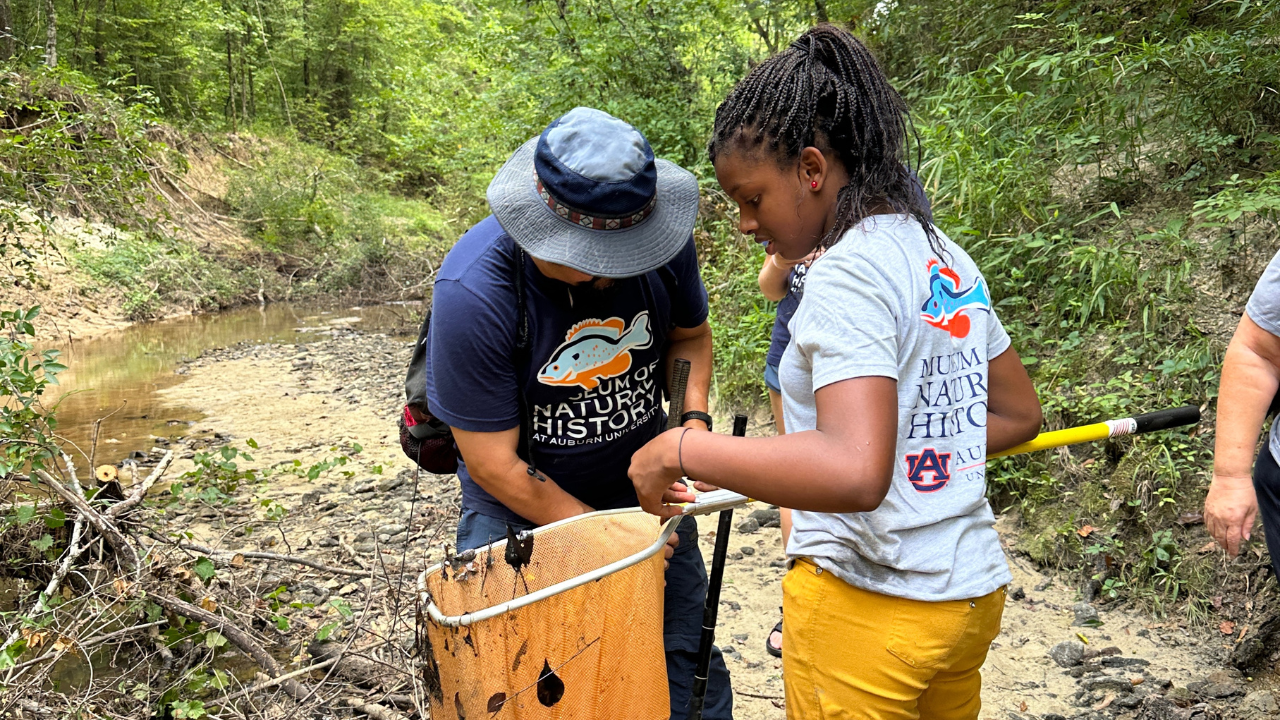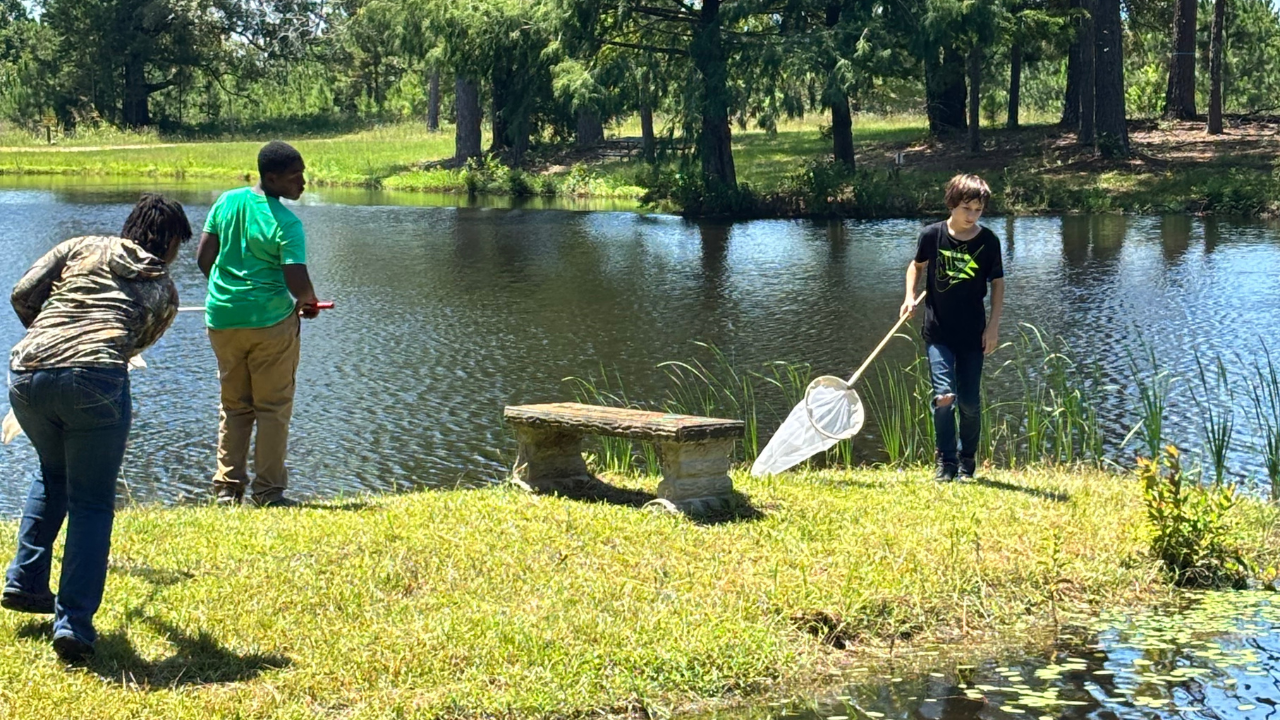content body

For Levi Farnsworth, meeting the turtle was one of the camp's highlights.
Instead of scrolling through summer on a screen, middle schoolers in Bullock County spent their days chasing dragonflies, wading through streams and holding turtles during a new camp hosted by the Auburn University Museum of Natural History at the Wehle Nature Center.
“This camp was a way for us to bring our mission to promote, celebrate and preserve biodiversity directly into the community,” said Morgan Muell, a doctoral candidate in biological sciences who volunteers with the museum and helped lead the program.
Graduate and undergraduate students from Auburn’s College of Sciences and Mathematics joined curators and collections managers to guide activities that introduced students to Alabama’s biodiversity. Each day focused on a different theme, from insects and plants to reptiles and fish, blending outdoor exploration with hands-on science.
Campers dipped nets into ponds to search for invertebrates, identified trees with field guides and cooled off with water games. Inside the center, displays of local wildlife set the stage for encounters with live animal “ambassadors” from the museum, including snakes, crawfish and turtles.
For Levi Farnsworth, the turtle was the highlight.

Campers worked together on a life-sized snake diagram during indoor biodiversity lessons.
“I liked learning about the ponds and creeks ecosystems, and which animals or creatures live there,” he said, adding he also enjoyed making new friends.
His mother, Felicia, was grateful for the chance to see him immersed in the outdoors.
“Today’s society is all online,” she said. “I wanted him to reconnect with nature.”
Muell said many children arrived hesitant about insects, reptiles or simply being outside, but those feelings often gave way to curiosity and confidence.
“There were so many close friendships formed that were really special for the kids,” she said. “Some of them came in quiet, but by the end they were laughing together, making inside jokes and feeling comfortable exploring.”
One of Muell’s favorite moments came during plant day, when students used field guides to identify trees. She recalled a boy who carefully studied leaves until he proudly announced he had found a white oak.
“To see younger kids learning to appreciate biodiversity is really special,” she said.

Campers sorted through a net to collect small animals during a stream study activity.
The setting itself added to the sense of discovery. Donated by the late Robert Wehle, the preserve includes lakes filled with frogs, dragonflies and even small alligators, as well as forest trails and rustic cabins. The camp was made possible by support from the Wehle Trust Fund, which has long invested in programs at the museum and allowed students to attend at no cost. Additional backing came from a National Science Foundation grant that built on the longstanding foundation of Wehle support.
For Muell, the support behind the camp also highlighted the importance of access. With help from the Wehle Trust Fund and a National Science Foundation grant, students could attend at no cost.
“Being able to offer this experience free of charge made it possible for more local families to take part,” she said.
The opportunity to share Alabama’s biodiversity has also shaped Muell’s own path as a scientist. She will graduate in December and plans to begin a postdoctoral position at the University of Texas at Austin. She said her time at Auburn expanded her interests beyond biology.
“I’m now not just a biologist but a naturalist,” she said.
For families like the Farnsworths, the impact was simpler but just as meaningful. The camp gave Levi a chance to unplug, explore and connect.
“He really enjoyed it,” Felicia said. “It was a great experience for him to get outside, learn and make friends.”
Thanks to the continued support of the Wehle Trust, the museum plans to build on this year’s success and give more students across Alabama the chance to discover the biodiversity in their own backyards.





